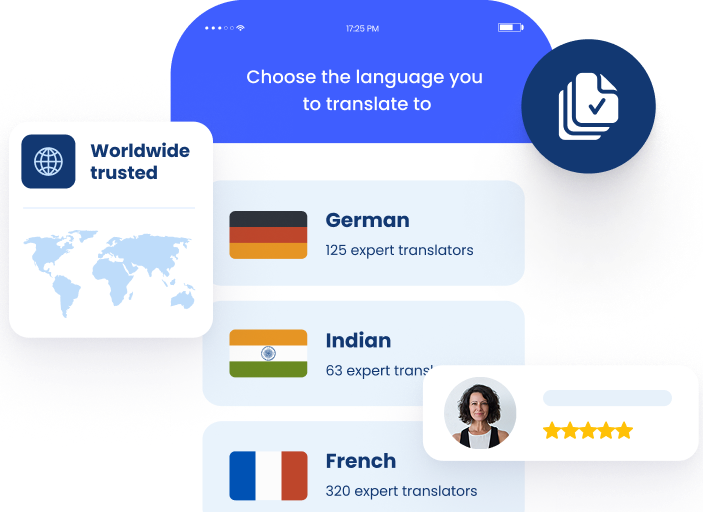Immigrating to the United States means entering a system that is both highly sought after and deeply unpredictable. Applicants often face long waits, changing policies, and the constant risk of setbacks caused by paperwork errors. For families and individuals investing time, money, and hope in the process, the smallest misstep can stretch a case out for months or even years.
Within this environment, official data from USCIS helps explain why outcomes vary so widely and why applicants cannot afford to overlook the details in their submissions. The numbers reveal just how overburdened the system has become and how much impact documentation quality has on whether a case moves smoothly or stalls. Keep reading to discover some of the key USCIS statistics and how certified USCIS translators help foreign applicants.
How Many Applications USCIS Receives Each Year
USCIS operates on a massive scale. In Fiscal Year 2023, the agency received nearly 11 million applications and completed over 10 million cases, a workload that rivals some of the largest bureaucracies in the world. Within this environment, every application competes for limited attention. Adjudicators rely on clear, standardized, and fully compliant documentation to make decisions efficiently.
This shows that in a system defined by overwhelming volume and complexity, your ability to control the quality of your application package is one of the most powerful tools you have to avoid delays.
The scale of USCIS filings demonstrates why errors are costly. Reports show that the agency received 9.04 million applications in FY 2022 and 9.08 million in FY 2021, before surging to 10.9 million in FY 2023. It completed roughly 10 million cases in 2023, handled by a workforce of about 20,000 employees.
Think of USCIS like a massive mail-sorting facility. If your documents are perfectly formatted and translated, they move through the automated flow. If they are unclear or missing translations, they are pulled out for slow, manual review. With each adjudicator managing thousands of cases, there is no time to decode foreign-language documents, making certified translations non-negotiable.

USCIS workload snapshot (FY 2021–2023)
Fiscal Year | Applications Received | Cases Completed |
2023 | 10.9 million | 10.0 million |
2022 | 9.0 million | 8.6 million |
2021 | 9.1 million | 7.2 million |
(Source: USCIS Annual Statistical Reports)

Family-based Petitions I-130 Filing Trends
One of the biggest contributors to USCIS backlogs is the I-130 petition, which establishes family relationships for immigration purposes. As of March 2025, there were over 2.39 million I-130 petitions pending. In just one quarter of FY2025, USCIS received more than 269,000 new I-130 petitions.
I-130 petitions require proof of family ties, usually through birth, marriage, or divorce certificates. Because these documents are often issued abroad, translations are mandatory. The backlog means processing already takes time, with reports indicating up to 15 months wait periods. A single translation error can extend these waits by months through a Request for Evidence (RFE).
Naturalization Applications N-400 Growth
Naturalization remains one of the busiest areas of USCIS. In FY 2023, more than 878,500 individuals became U.S. citizens. By the first half of FY2025, nearly 500,000 new N-400 applications had been filed.
The N-400 requires a range of supporting documents, from marriage certificates to criminal records, depending on personal history. Legally, any foreign-language document must include a certified translation.
While the average N-400 processing time improved to 5.5 months in 2025, this figure only applies to error-free cases. Translation-related RFEs can derail an application. With denial rates at nearly 12% in FY 2023, precision in documentation directly affects the odds of success.
Adjustment of Status and Green Card Volumes
Form I-485, the adjustment of status application, highlights the demand for permanent residency. USCIS granted lawful permanent residence to nearly 1.2 million people in 2023, with more than half adjusting status from within the U.S. In the first half of FY2025 alone, over 545,000 new I-485 filings were submitted.
The I-485 requires extensive evidence, including birth certificates, marriage documents, and often police records from multiple countries. These must all be translated. Processing times average 8.2 months for family-based and 7 months for employment-based filings, but they can swing dramatically, sometimes exceeding a year. With such high stakes, a poorly prepared translation almost guarantees an RFE and extended delays.
Asylum and Humanitarian Case Filings
Humanitarian caseloads add another layer of urgency. In FY 2023, USCIS received about 457,200 new asylum applications, a nearly 90% increase from the prior year. In that year, 54,350 individuals were granted asylum.
Asylum cases often rely on foreign police reports, court decisions, medical documents, or country conditions reports. Without certified translations, these cannot be considered. The stakes here are even higher, meaning inaccurate or incomplete translations can undermine claims of persecution.
How Long USCIS Takes to Process Applications

Processing times are both long and unpredictable. For example, fiancé visas (I-129F) increased from 4.6 months in FY2020 to 13.9 months in FY2023. Waivers (I-601A) stretched from 11.2 months to 43 months in the same period. These are median figures, meaning half of applicants wait longer.
You cannot control where or how your application is processed. The only factor you can manage is quality and that begins with ensuring every document and translation meets USCIS standards.
Median USCIS processing times (mid-2025)
Form | Purpose | Median Time (Months) |
I-130 (LPR sponsor) | Petition for relative | 35.0 |
I-751 | Remove conditions | 21.4 |
I-130 (U.S. citizen sponsor) | Petition for relative | 14.5 |
I-485 (family-based) | Adjustment of status | 8.2 |
N-400 | Naturalization | 5.5 |
(Source: Boundless, 2025)
Average Wait Times Across Major Forms
These timelines translate into real hardship. A 35-month wait for an I-130 is nearly three years of family separation. A year-long wait for a K-1 fiancé visa can disrupt life plans indefinitely. Submitting an application with errors is like standing in a line for hours, only to be told to go back to the end.
Processing Differences by Service Center
Processing times also vary by location. In May 2024, an N-400 application took 13 months in Charleston, South Carolina, but only 5.5 months in Cleveland, Ohio. Applicants cannot choose where their case is processed, which makes it even more important to avoid errors that trigger delays.
Where to Find the Latest USCIS Data and Reports
To track the latest information, you can use the following resources:
- USCIS Immigration and Citizenship Data – official form volumes and adjudications.
- DHS Office of Homeland Security Statistics (OHSS) – detailed annual reports on lawful permanent residents, asylum, and refugee data.
- USCIS Check Case Processing Times Tool – updated wait times by form and location.
- Transactional Records Access Clearinghouse (TRAC) – independent research on immigration courts and backlogs.
Relying on these trusted sources helps you avoid misinformation and plan effectively.
Get USCIS-ready Translations by The Language Doctors

Across millions of cases and years of data, there is a constant pattern showing that the USCIS system is overloaded, delays are unavoidable, and errors multiply wait times. A certified translation is among the key items that help you avoid ending up in the reject pile.
A USCIS-ready translation includes a signed declaration of accuracy and translator competence. It ensures compliance and protects your case from being rejected over preventable mistakes. In contrast, relying on a bilingual friend or online tool is risky and often non-compliant.
If you want to safeguard your time and financial investment, you must work with a reliable language partner. Don’t let a preventable translation error add months to your wait or jeopardize your future. Contact The Language Doctors today for a free quote on certified translations that meet every USCIS requirement.


